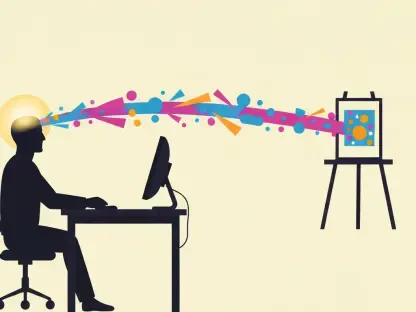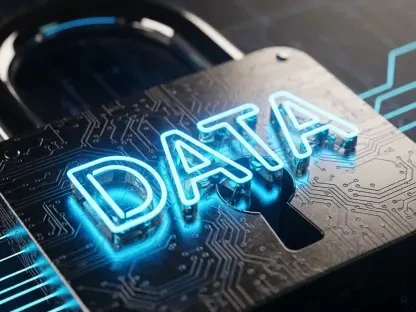In a bold move that could reshape the landscape of AI-driven search engines, Brave Software has taken a stand against News Corp by initiating legal proceedings to define the use of copyrighted materials by its AI-powered search engine. The case has sparked a heated debate, as News Corp alleges that Brave has been exploiting its content without proper authorization, while Brave seeks judicial clarification on whether its actions constitute copyright infringement.
The Controversy Surrounding AI Technology and Copyright Laws
Brave’s Argument for Legal Parity
Brave asserts that its AI search engine’s indexing of content should be deemed fair use, claiming that it operates similarly to other established search engines like Google and Bing. By filing for a declaratory judgment from a California federal court, Brave aims to establish that its practices do not infringe upon copyright laws. This move underscores the necessity for a uniform legal framework that governs all search engines, irrespective of their scale.
Brave’s perspective is centered on the belief that AI-driven search engines should have the same privileges and considerations as human-curated search engines. The company emphasizes that its AI technology adds value to the indexed content, benefiting both users and content creators. By providing an efficient means to access information, Brave contends that it fosters innovation and knowledge dissemination in ways that align with the principles of fair use.
News Corp’s Ethical Concerns
On the other hand, News Corp views Brave’s actions as ethically questionable and potentially detrimental to content creators. The media giant argues that Brave’s AI search engine extracts and utilizes its content without proper authorization, thereby undermining the intellectual property rights of publishers. This practice, according to News Corp, compromises the revenue-generating potential of its content and infringes upon the rights of content creators.
News Corp’s stance is fortified by its commitment to protecting the interests of its publishers and ensuring that their content is not exploited without consent. The company calls for stringent legal measures to regulate the use of copyrighted materials by AI search engines, arguing that their unchecked operations could lead to a devaluation of copyrighted content. This perspective highlights the ethical dimension of the issue, raising questions about the responsibilities of AI developers in respecting intellectual property rights.
The Proactive Stance of AI Firms
Defining Legal Boundaries
The Brave versus News Corp case exemplifies the proactive approach taken by AI firms to define clear legal boundaries before larger media organizations escalate litigation. This trend reflects the increasing friction between content creators and AI developers, as both parties seek to protect their interests. AI developers like Brave are keen on securing the legal right to integrate comprehensive data into their algorithms, thereby enhancing machine learning capabilities and overall user experience.
The proactive stance of AI firms underscores their desire for legal clarity and certainty. By seeking judicial intervention, companies like Brave aim to establish precedents that would provide them with a clear understanding of their obligations and limitations. This proactive approach is essential in navigating the complex interplay between AI technology and existing copyright laws, ensuring that innovation is not stifled by legal ambiguities.
Evolving Dynamics
The dynamics of the relationship between content creators and AI developers are evolving rapidly. As AI technology continues to advance, the need for a balanced approach that respects the rights of content creators while promoting technological innovation becomes increasingly apparent. Content creators seek to safeguard their intellectual property, while AI developers push for the seamless integration of vast datasets to refine their algorithms and deliver better services.
This evolving dynamic calls for a collaborative approach, where both parties work together to establish mutually beneficial solutions. The legal discourse surrounding the Brave versus News Corp case underscores the importance of dialogue between content creators and AI developers. By finding common ground, these stakeholders can create an environment that fosters innovation while ensuring that intellectual property rights are upheld.
Brave’s Financial Model and Its Implications
The Complex Nature of Modern Digital Business Practices
Brave’s financial model, which involves monetizing user attention through its Basic Attention Token (BAT) cryptocurrency, adds another layer of complexity to the ongoing legal battle. This model reflects the multifaceted nature of modern digital business practices, where innovative monetization strategies intersect with traditional notions of copyright and intellectual property.
The use of BAT tokens to reward users for their attention introduces a unique dimension to the legal discourse. This model challenges conventional revenue generation methods and raises questions about the applicability of existing copyright laws to new business practices. The intersection of cryptocurrency, user engagement, and content monetization creates a complex landscape that requires careful consideration and legal clarity.
Implications for Content Monetization
The implications of Brave’s financial model extend beyond the immediate legal battle with News Corp. This model could potentially influence the broader industry, prompting other digital platforms to explore innovative monetization strategies. The success or failure of Brave’s defense could set a precedent for how similar models are perceived and regulated in the future.
If Brave’s approach is deemed legally sound, it could encourage other AI-driven platforms to adopt similar financial models, potentially transforming the way digital content is monetized. Conversely, if Brave’s model is found to infringe upon copyright laws, it could lead to stricter regulations and increased scrutiny of innovative business practices. The outcome of this case will likely have far-reaching implications for the digital economy and the future of content monetization.
The Central Issue of Fair Use Interpretation
The Broader Discourse on Fair Use and AI
At the heart of the Brave versus News Corp case lies the interpretation of fair use in the context of AI and search engine functionalities. This legal struggle is emblematic of the broader discourse on how technology intersects with existing copyright laws. The outcome of this case could play a pivotal role in shaping the future of fair use doctrine and its application to AI technologies.
Fair use, a legal principle that allows limited use of copyrighted material without permission under certain conditions, is a critical concept in this debate. The application of fair use to AI-driven search engines raises complex questions about the balance between protecting intellectual property rights and promoting technological innovation. The judicial interpretation of fair use in this context will have significant implications for both content creators and AI developers.
The Need for Judicial Intervention
The Brave case highlights the urgent need for judicial intervention to clarify the legality of AI-driven content indexing. As AI technologies continue to evolve, the legal frameworks governing their use must keep pace with these advancements. A clear and consistent legal framework is essential for ensuring that the interests of both content creators and technology companies are adequately protected.
Judicial intervention in this case could provide much-needed clarity on the application of fair use to AI-driven search engines. This clarity would help establish guidelines for the responsible and ethical use of copyrighted materials by AI technologies. By defining the legal boundaries, the judicial system can contribute to a balanced and fair-use doctrine that addresses the needs of both content creators and technology companies.
Future Considerations and Legal Framework Development
The Quest for a Balanced Fair-Use Doctrine
In conclusion, the ongoing legal battle between Brave Software and News Corp exemplifies broader industry challenges regarding the intersection of AI, copyright infringement, and the quest for a balanced fair-use doctrine. As AI technologies become increasingly integral to modern digital business practices, the need for comprehensive legal frameworks that address the complexities of these technologies has become more pressing.
Future considerations must focus on creating legal frameworks that strike a balance between protecting intellectual property rights and fostering technological innovation. These frameworks should take into account the unique characteristics of AI technologies and the evolving nature of digital content creation and monetization. Collaboration between content creators, technology companies, and legal experts will be essential in developing solutions that meet the needs of all stakeholders.
Setting Precedents for Future Interactions
In a decisive step that could potentially transform the realm of AI-driven search engines, Brave Software has instigated legal action against News Corp. The intent behind this legal move is to clarify the legal boundaries regarding the use of copyrighted materials by its AI-powered search engine. This legal battle has ignited a fervent debate, as News Corp accuses Brave of utilizing its content without appropriate authorization. On the other side, Brave is asking for judicial confirmation to determine whether their activities fall under copyright infringement. The outcome of this legal tussle could set a significant precedent for the tech industry, especially concerning how AI algorithms interact with publicly available content. Both parties, with vested interests, await the court’s decision, which could either limit or expand the innovative use of AI in gathering and presenting information. The judgment will likely resonate across the tech sector, potentially reshaping policies and the legal landscape surrounding intellectual property and AI technology.









